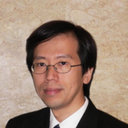Hemangioblastoma of filum terminale associated with arteriovenous shunting.
Atslēgvārdi
Abstrakts
BACKGROUND
Spinal arteriovenous shunt typically presents in middle age or in the elderly with a strong male predilection. The clinical presentation is usually progressive neurological deficits such as paraparesis or incontinence due to cord edema, although back pain is also a common presentation. Progress of neurological deficit is typically stopped by occlusion of the shunt (surgically or endovascularly), but the return of loss of function may be found in less than half of these patients. In contrast, spinal hemangioblastomas usually occur in adults, and the most common presentation is pain with radiculopathy. Location in the filum terminale is very rare.
METHODS
After a review of the medical literature, we identified 7 cases of hemangioblastomas arising from the filum terminale (Am J Neuroradiol. 2005;26:936-945; Acta Neurochir [Wien]. 2000;142:1059-1062; J Neurosurg Sci. 2001;45:58-62; J Clin Neurosci. 2006;13:285-288; Neurosurgery. 1999;44:220-223; Clin Neurol Neurosurg. 1985;87:55-59). We report an additional case of a filum terminale hemangioblastoma occurring in a 64-year-old man with 1 month exacerbation of chronic low back pain. Preoperatively, it was misdiagnosed as filum terminale arteriovenous fistula.
CONCLUSIONS
Even with modern imaging, preoperative diagnosis can still be difficult.


